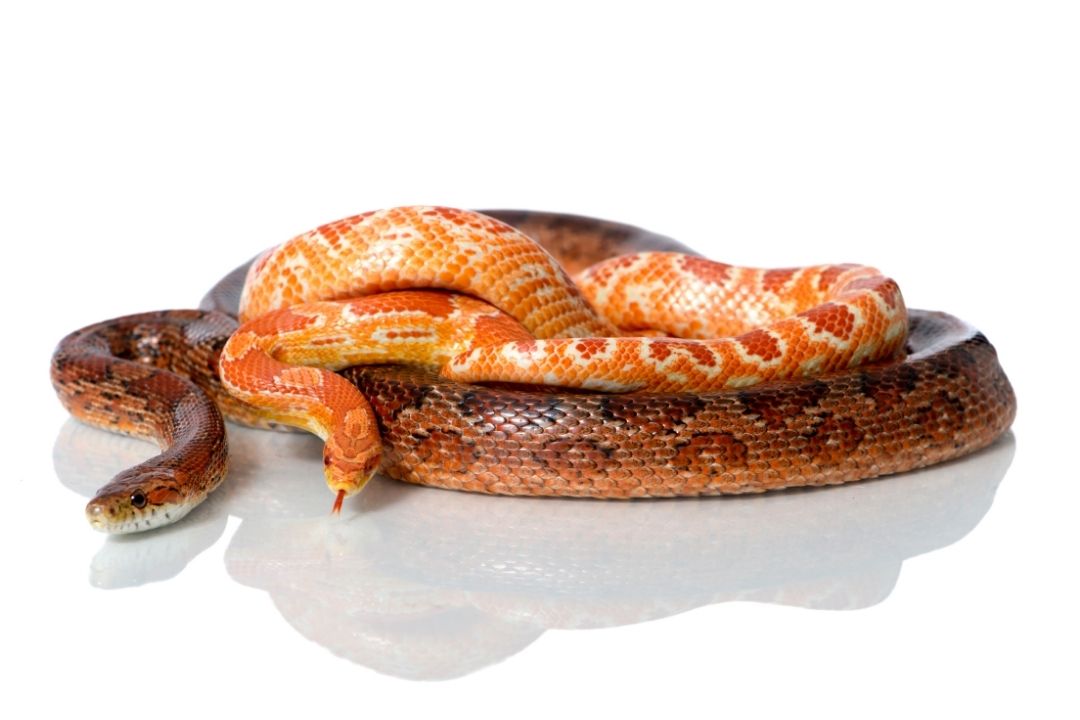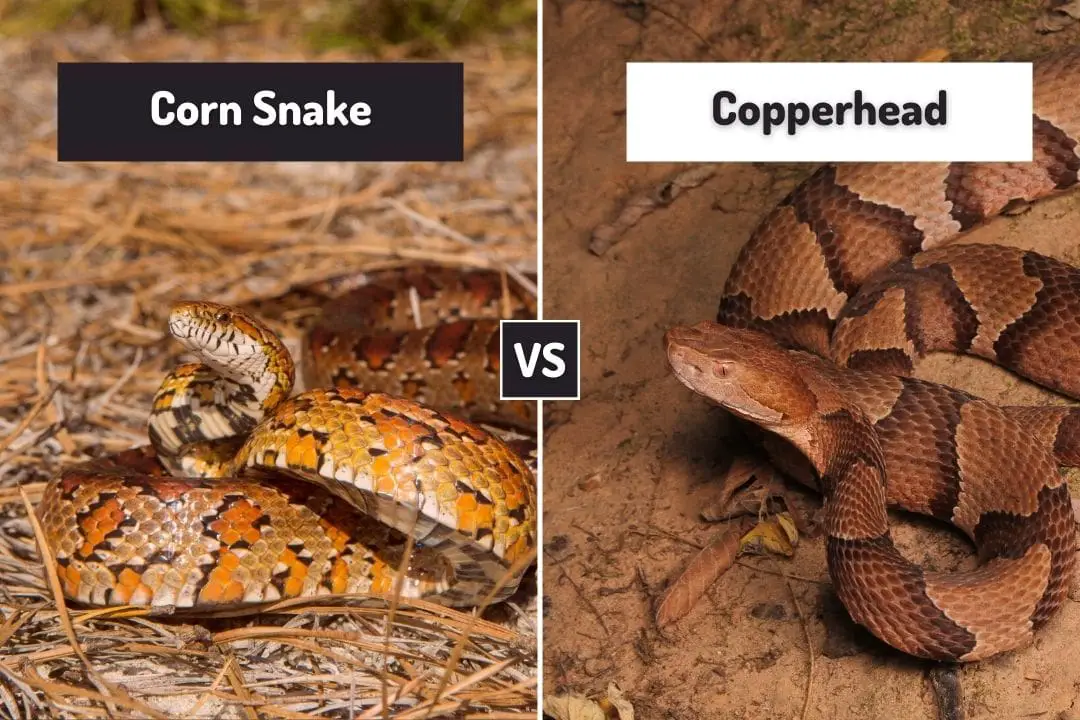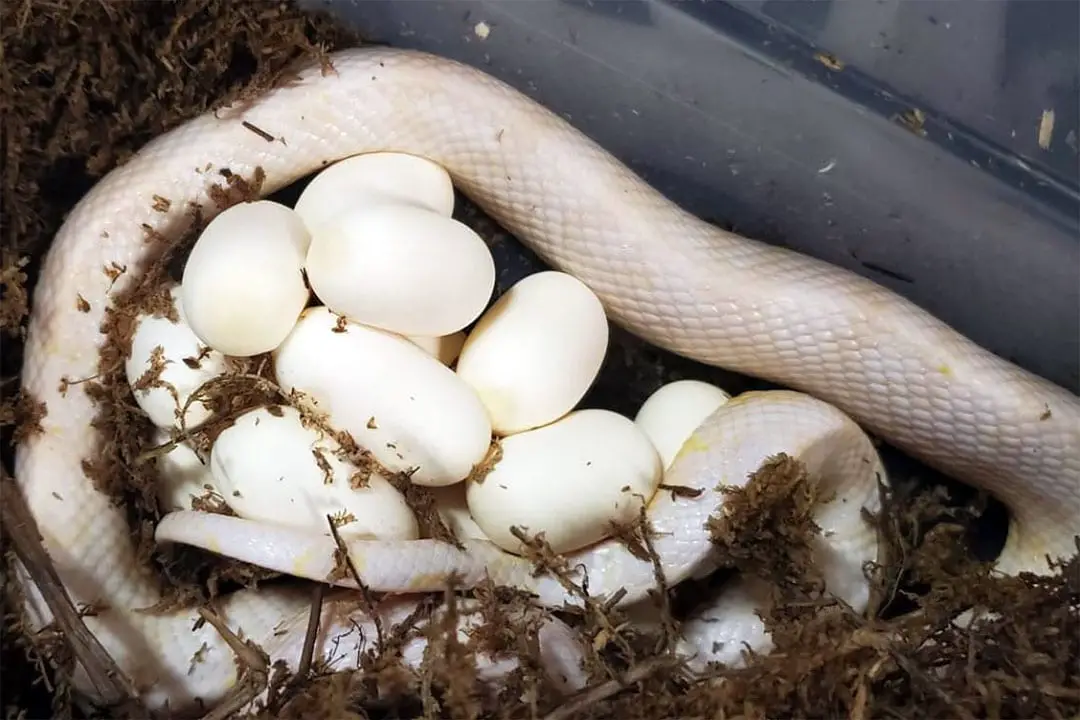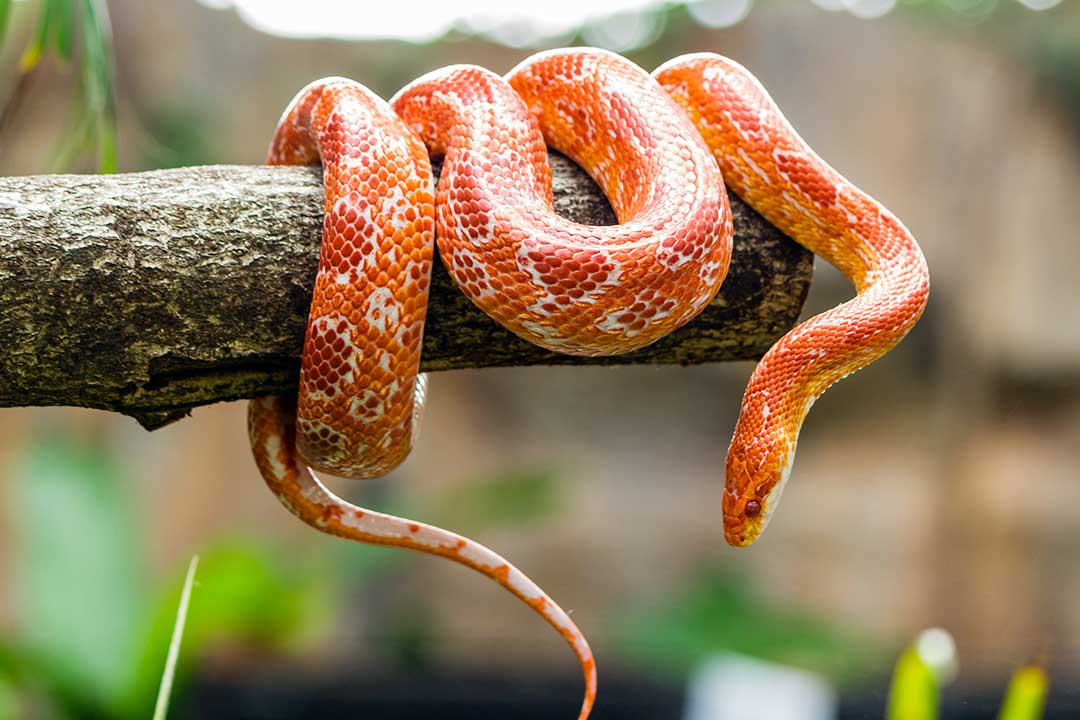If you want to keep corn snakes, you are likely wondering what the best practices are for your snake. If you get just one snake, you may worry that your snake will be lonely.
So, can corn snakes be kept together?
You should not house corn snakes together. Snakes are not typically social and may find sharing a terrarium stressful.
Everything you need to know about caring for Corn Snakes in captivity:
Read our Corn Snake Care Sheet (Complete 101 Guide)
Social Behaviors in Corn Snakes
Corn snakes are typically solitary animals.
They do not nurture their young or spend time together unless it is time to breed. Hatchlings are occasionally found together in cold weather, but this isn’t too common. This page has some good information on corn snake behavior.
As they are not social, the only time two corn snakes should be in the same enclosure is if you are attempting to breed them.
Risks of Cohabitation
If you allow two corn snakes to live together, there are many risks to the snakes.
If the snakes are not similar in size, the larger snake may eat the smaller one. If you feed the snakes in the same enclosure, you also risk the snakes fighting over the prey or accidentally trying to eat the other snake. Corn snakes that have struck something will frequently refuse to release it.
If you house two males, you may also see some fighting.
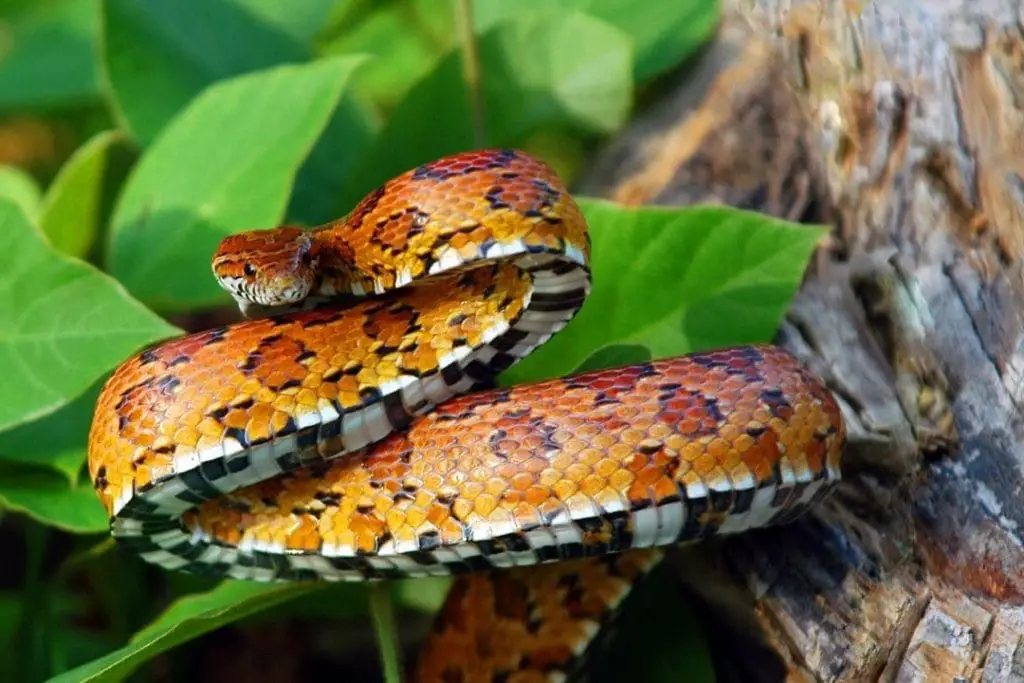
The snakes will also compete for resources like hides. A male and female housed together will likely breed. If this is early or if the snakes aren’t in good health, this can be dangerous to them. Females in poor health can become egg-bound or malnourished if they breed.
It is general, so you will learn about snakes in general rather than corn snakes specifically.
Corn snakes can also pass diseases or parasites to each other if they are housed together. Many illnesses in corn snakes can be passed easily if the snakes are sharing a vivarium.
Any ill snake needs to be kept quarantined. Snakes will also try to hide signs of illness, so you may not notice until both snakes are ill. You also will need a much larger enclosure for two snakes.
Putting two snakes in a smaller enclosure risks them fighting more often or being stressed out since they can’t escape. Long-term stress like sharing space will lower your snake’s lifespan and weaken its immune system.
This can result in problems like infections being more common. Generally, safely cohabiting snakes is very difficult and isn’t possible in most situations.
How to House Two Corn Snakes Successfully
Cohabiting corn snakes isn’t easy, and can only be done under very specific circumstances. The first is that both snakes are adult females of a very similar size. Two males will likely fight. If one snake is larger, it may eat the smaller snake. Never house hatchlings together.
Next, you need a much larger enclosure.
You would need a minimum of a 40-gallon tank for two snakes. You need enough space for at least 4 hides, split between the warm and cool sides.
More hides are better, and they should be similar or identical so the more dominant snake doesn’t bully the other out of the good hides. Having a choice of hiding in different areas is important for your snake’s sense of security and thermoregulation.
The snakes should also be fed in separate containers.
This is to reduce food competition. It will also make sure that one snake doesn’t try to strike and kill the other snake in a mistaken feeding response. You will need to watch the snakes closely for signs of illness.
Many illnesses in snakes are highly contagious so both snakes could quickly become sick. You also need to watch out for changes in stool or urine to spot illness and separate the snakes to see which animal is ill.
Alternatives to Co-Housing Corn Snakes
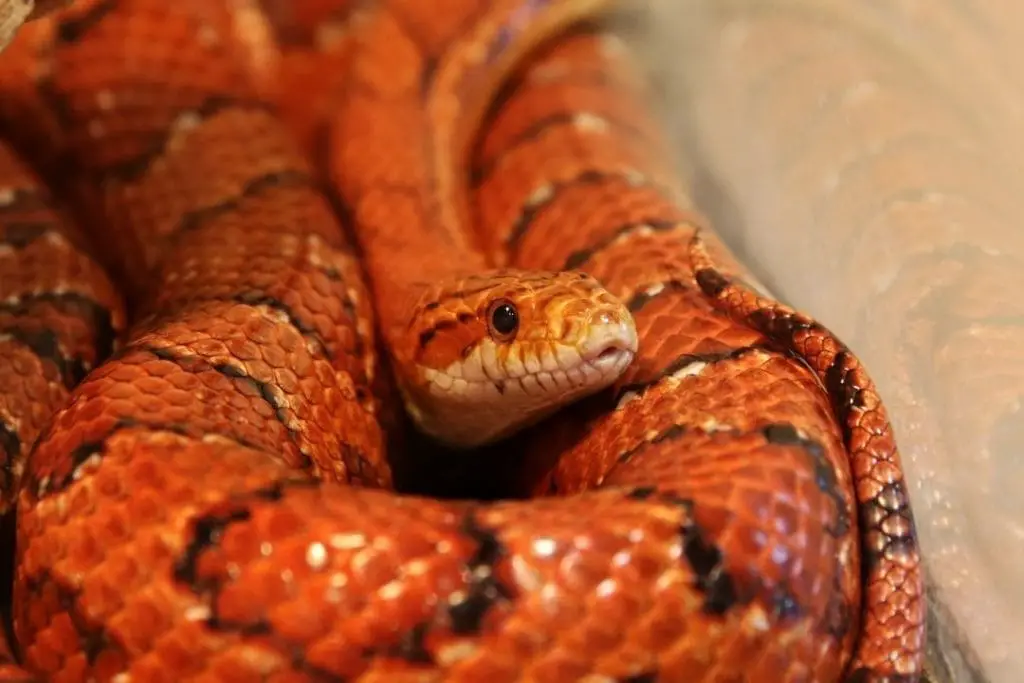
There might be several reasons you want to have two corn snakes in one enclosure. If it is because you worry they will be lonely, you don’t need to be concerned. Corn snakes aren’t social, and actively dislike being around other corn snakes if they aren’t breeding.
Your snakes will each be happier to have their own space. If it is a concern about space, there are a few solutions. Some terrariums on the market can be stacked so you can take advantage of vertical space.
Some breeders use a rack system that holds several enclosures. If you use larger enclosures with enough space, both corn snakes should be happy with this option.
If it is a cost issue, know that there are cheaper options on the market. You don’t need top-of-the-line or something pretty to keep your snakes healthy and happy.
You can also look around for secondhand options. Many snake owners who have larger species might be getting rid of small enclosures for cheap in your area.
Old aquariums meant for fish can also work. Just get a minimum of 20 gallons with more width and length than height. You need to make sure you have a mesh cover that your snake can’t push away.
Corn snakes are natural escape artists and will take off if it gets a chance. Other equipment can be found for cheap, and you won’t need two of all equipment.
You can use the same feeding tongs, and the same instant-read thermometer to check that your snake’s enclosure is at the right temperature. Since co-habiting snakes is so likely to fail, you will likely need to revert to two enclosures. You won’t save if you need to rush out and get another enclosure because the snakes can’t stand each other or got into a fight.
Summary
Generally, you shouldn’t house two snakes together. They don’t need to be social, and you will likely just stress out the snakes since they can’t get away from each other.
Only two adult females of similar size can be housed together, but you should watch to make sure the snakes aren’t too stressed out. If you have any thoughts, feel free to comment below.
